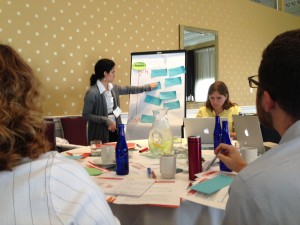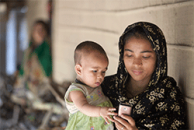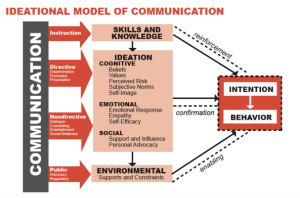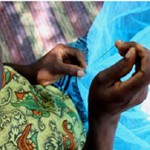Using Health Communication Frameworks in ICT Interventions to Guide RMNCH Demand
Connecting Theory to ICTs and New Media
Using ICTs and new media to carry out health and behavior change communication interventions has undoubtedly gotten more ubiquitous in the past decade. The prevalence of mobile phones and other technologies makes ICTs and new media a reliable and efficient modality to reach large populations. But as these interventions go beyond the pilot stages, many public health and behavioral scientists are asking, “What about the theory behind the practice?”
The Health Communication Capacity Collaborative (HC3) brought together a small group of health communication professionals and behavioral scientists in Washington, DC on September 19th for a day-long interactive workshop on connecting media with theoretical frameworks in order to generate demand for life-saving reproductive, maternal, newborn and child health (RMNCH) commodities. The day started with a brief explanation of the Transitions of Change (derived from the Stages of Change) and Ideational Model of Communication.
Attendees were asked to split off into groups and identify which ideational factors matched up with each transition. Groups came up with varied responses, but several ideas were generally agreed upon. Self-efficacy was seen as a very important part of most of the transitions, and knowledge was pervasive between all the groups, with variations in depth and breadth identified. It was also noted that factors may change according to the specific intervention and specific context of each intervention.
During the second half of the workshop, attendees examined the potential for communication theories to inform the framework. Participants were asked to rank forms of ICT and new media on a scale from “lean” to “rich”, using the various criteria of richness that the theory utilizes, such as interactivity, tailoring, cues, message ambiguity, and affect. An interactive phone call will be much richer than a voice recording, but a leaner medium, such as SMS, may be more effective at communicating a simple message. So the question becomes: which messages can be most effectively conveyed through what media?

At the end of the workshop, participants grappled with connecting the dots from the Transitions of Change and Ideational Model constructs to media and its richness. But selecting the right media isn’t always about the message. What about the audience? To think about this, participants also discussed other useful approaches such as Uses and Gratifications theory that can help guide media selection depending on the target audience’s use of them to meet different needs.
The outcomes of the day will be used to finalize a theoretical framework for ICT and new media use and develop recommendations for country-based health communication programming.

These tools will form part of the Demand Generation Implementation Toolkit that HC3 is developing on behalf of the UN Commission on Life-Saving Commodities for Women and Children. The Implementation Kit will provide a collection of cross-cutting resources and commodity specific tools to guide design and development of demand generation programs, including those that utilize ICT and new media, to increase use of life saving commodities.









Leave a Reply
Want to join the discussion?Feel free to contribute!